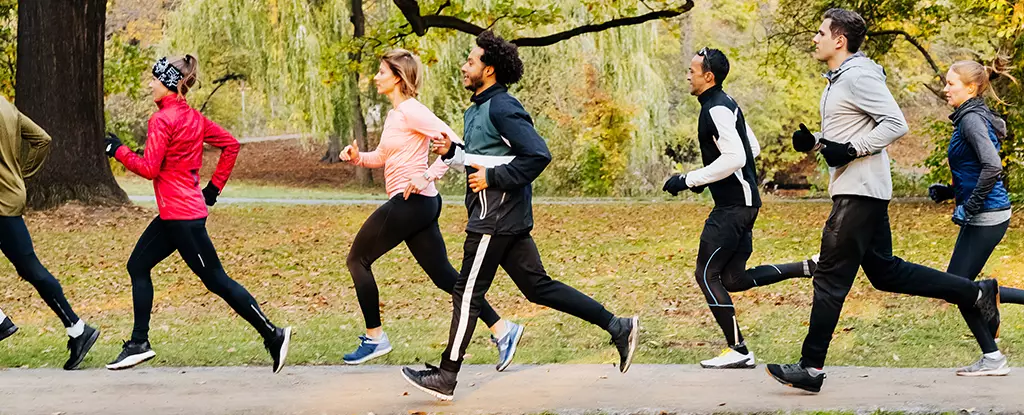Runners have always been obsessed with speed and constantly strive to get faster. However, in recent years, there has been a growing trend in the running community known as “slow running”. This approach emphasizes that anyone can run, regardless of their ability or pace. Slow running advocates argue that it has numerous benefits, not only for physical health but also for the enjoyment of running. Surprisingly, even elite runners spend a significant amount of their training time at slow paces. This article explores the science behind slow running and argues why it might be the key to running success.
Elite runners, like Eliud Kipchoge and Kelvin Kiptum, spend approximately 80 percent of their training time at what is termed “zone 2 running” – a pace that raises the heart rate but still allows for conversation. Only 20 percent of their training is done at higher intensities closer to race pace. This training approach is primarily aimed at reducing the risk of illness and injury. As running speed increases, the strain on the body also increases, leading to a higher risk of health issues. By prioritizing slow running, athletes minimize the chances of missing out on training due to illness or injury.
A fundamental aspect of training is the development of a strong base. This refers to the physiological foundations that underpin all training adaptations. Endurance runners need a solid cardiovascular fitness base to support their higher intensity adaptations. Visualize this concept as a pyramid – the bigger the base, the taller the pyramid can be. Similarly, the better the base during slow running, the more capable an athlete will be when working at higher intensities.
During slow running, the heart does not experience significant stress, but it pumps oxygenated blood close to its maximum capacity. This is essential because even though the heart adapts to training, higher intensities do not increase its pumping capacity. Developing a strong base allows for more oxygen to be delivered to the working muscles per heartbeat. It also promotes the use of stored fat as an energy source, rather than relying on carbohydrates. Burning fat is a more efficient process, resulting in less overall energy usage and reduced fatigue on race day.
Scientific studies have shown that slow running leads to greater gains in VO2 max (oxygen capacity) and race speed. Athletes who spend more time at slow paces experience around 1 percent higher gains in these aspects compared to those who focus on high-intensity runs. Furthermore, slow runners benefit from around five times greater improvements in their aerobic base. Even for non-athletes, keeping most runs at a low intensity can still be optimal for overall fitness and health.
To engage in slow running effectively, it is crucial to find the right pace. Physiologically, zone 2 is defined as occurring below the lactate threshold – the point where lactate appears in the blood. When running at a slow pace, you should be able to hold a conversation without difficulty, and your heart rate should be around 70 percent of your maximum. If conversation becomes challenging, you should slow down your pace. An easy way to determine if you are in the right zone is to try the talk test. If you can sing out loud without struggling to catch your breath, you are in the correct zone.
Slow running offers numerous benefits for both the body and mental health. By prioritizing slow paces, runners can reduce the risk of injury and illness, build a stronger base, improve aerobic capacity, and enhance race speed. Additionally, slow running allows the body to use stored fat more efficiently, leading to less overall energy usage and reduced fatigue. Engaging in slow running may inspire those who have been self-conscious about their pace to try running as a form of exercise and discover the enjoyment it can bring.
While the running community often focuses on speed and high-intensity training, slow running has proven to be a beneficial approach for runners of all levels. Both elite athletes and recreational runners can benefit from spending a significant amount of their training time at slow paces. Slow running allows for the development of a stronger base, improved aerobic capacity, and reduced risk of injury and illness. By embracing the concept of slow running, individuals can enhance their overall running success and find a newfound appreciation for the sport.


Leave a Reply